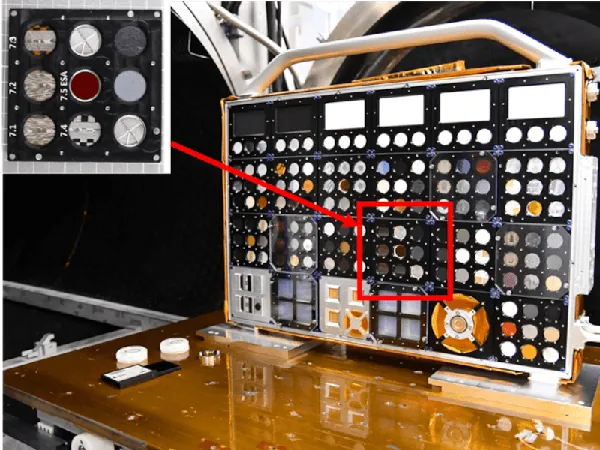
Breakthrough in Space Technology: UCD Professor Pioneers New Materials for Future Spacecraft!
2024-11-05
Author: Nur
Breakthrough in Space Technology
In a groundbreaking initiative led by University College Dublin (UCD) Professor Kate Robson Brown, researchers are on the brink of a major advancement in space engineering. This team is developing analytical models designed to predict the lifespan of new composite materials that will face the harsh conditions of low-Earth orbit.
Revolutionary Launch of Composites
A revolutionary set of carbon fiber reinforced composites, engineered at the University of Bristol, launched from the iconic John F. Kennedy Space Center in Florida on November 5, destined for the International Space Station (ISS). These materials will be placed on the Bartolomeo platform, strategically located on the ISS, where they will endure testing amid the unforgiving environment of space.
Extreme Conditions and Testing
Over the next 12 to 18 months, these composites will orbit Earth approximately 9,000 times at velocities exceeding 27,000 kilometers per hour. They will be subjected to extreme temperatures ranging from a raging -150 degrees Celsius to a blistering 120 degrees Celsius. The materials must also withstand dangerous space debris that travels seven times faster than a bullet, pervasive electromagnetic radiation, high vacuum conditions, and atomic oxygen—known for its erosive qualities tough enough to challenge the most durable of materials.
Significance of the Launch
This launch marks a significant milestone in the European Space Agency's Euro Materials Ageing mission, aimed at innovating materials tailored for space applications. Among the 15 teams participating in this pioneering project is the Bristol Composites Institute (BCI), led by Professor Ian Hamerton. He emphasizes the unprecedented challenges faced in designing materials that can withstand the rigors of space, stating, “Access to repair these materials is not an easy option, so they must be built to survive without maintenance.”
Real-Time Data Collection
As solar radiation continuously alters the physical, chemical, and optical properties of materials, the research team will gather real-time mass loss data to assess the performance of these composites. This information will be crucial in validating the analytical models being developed by Professor Brown at UCD.
Professor Brown's Reflection
Reflecting on the journey that has led to this moment, Professor Brown shared, “After nearly five years of research to develop novel composite materials for space applications, it is incredibly thrilling to see our experiment launched to the International Space Station. I’m proud to contribute to this mission alongside a multidisciplinary team dedicated to digital and integrated testing of innovative materials that are vital for the burgeoning space economy.”
Innovative Bartolomeo Platform
Moreover, the Bartolomeo platform, an ingenious construction by Airbus, enhances the ISS by allowing it to accommodate up to 12 external payloads. This capability opens doors for various research initiatives, including studies in material sciences, environmental science, and astrophysics.
Advancements in Space Construction
In related news, a team from Trinity College has taken strides in space construction materials by developing a composite using carbon nanotubes to bind fine sand and lunar or Martian regolith, creating strong building blocks that could be utilized on extraterrestrial terrains.
Looking Ahead
As humanity gears up for the next phase of space exploration, these advancements in materials science are not just theoretical—they represent tangible beginnings that could redefine our capabilities in building future spacecraft and habitats in the cosmos. Stay tuned for developments as research continues in this exhilarating arena!



 Brasil (PT)
Brasil (PT)
 Canada (EN)
Canada (EN)
 Chile (ES)
Chile (ES)
 España (ES)
España (ES)
 France (FR)
France (FR)
 Hong Kong (EN)
Hong Kong (EN)
 Italia (IT)
Italia (IT)
 日本 (JA)
日本 (JA)
 Magyarország (HU)
Magyarország (HU)
 Norge (NO)
Norge (NO)
 Polska (PL)
Polska (PL)
 Schweiz (DE)
Schweiz (DE)
 Singapore (EN)
Singapore (EN)
 Sverige (SV)
Sverige (SV)
 Suomi (FI)
Suomi (FI)
 Türkiye (TR)
Türkiye (TR)